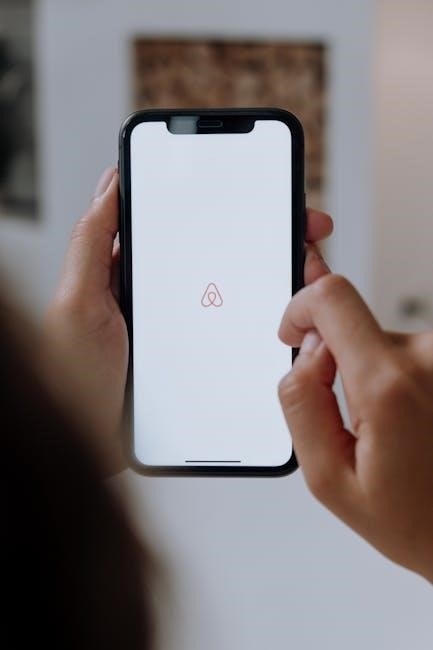plumbing aptitude test practice pdf
Plumbing Aptitude Test Practice PDF: A Comprehensive Study Plan
Plumbing aptitude test practice PDFs offer realistic questions, crucial for apprenticeship preparation, evaluating math, reading, and spatial skills effectively․
These resources simulate exam conditions, aiding skill improvement and analysis of results, ultimately boosting confidence for the standardized assessment․
Understanding the Plumbing Aptitude Test
Plumbing aptitude tests serve as a formal evaluation, often a gateway to competitive apprenticeship programs, particularly within trade unions like the UA․ PDF practice materials are vital for candidates seeking to demonstrate foundational cognitive skills essential for success in this skilled trade․
These standardized assessments measure a candidate’s capacity for technical instruction and the practical application of complex concepts․ Passing signifies the necessary aptitude for hands-on work․ Preparation using practice PDFs focuses on math, reading comprehension, and spatial reasoning – core areas assessed during the exam․ Understanding the test’s purpose is the first step towards effective preparation․
Purpose and Importance of the Test
The primary purpose of a plumbing aptitude test is to identify candidates possessing the cognitive abilities needed to thrive in a plumbing apprenticeship․ Utilizing practice PDFs helps determine if individuals can grasp technical concepts and apply them practically․
Its importance lies in ensuring apprentices receive effective training and contribute safely and efficiently to projects․ A strong score demonstrates potential for technical instruction and hands-on application․ PDF resources allow focused preparation on key skill areas, increasing the likelihood of success and securing a valuable career pathway within the plumbing industry․
Test Format and Structure
The plumbing aptitude test is generally a standardized, multiple-choice assessment․ Practice PDFs mirror this format, offering a realistic testing experience․ Expect sections evaluating mathematical reasoning, reading comprehension, and spatial visualization․
These tests often include questions on basic arithmetic, algebra, and geometry, alongside interpreting technical diagrams and written instructions․ Utilizing practice materials allows familiarization with question types and time constraints․ Understanding the structure – the number of sections, question difficulty, and allotted time – is crucial for effective preparation and maximizing your score․
Key Skill Areas Assessed
Plumbing aptitude tests primarily assess mathematical skills, including arithmetic, fractions, and basic algebra – vital for pipe sizing and material calculations․ Reading comprehension is tested through technical manuals and schematics, demanding accurate interpretation․
Spatial reasoning and visualization are critical for understanding 3D systems and pipe fitting․ Practice PDFs focus on these areas, offering questions on identifying plumbing symbols and visualizing assemblies․ Success hinges on demonstrating aptitude for technical instruction and hands-on application, making targeted practice essential for a strong performance․
Mathematical Reasoning for Plumbing
Plumbing demands strong math skills; practice PDFs emphasize arithmetic, fractions, algebra, and geometry for accurate calculations related to pipe sizing and drainage systems․
Basic Arithmetic and Fractions
Basic arithmetic and fraction proficiency are foundational for plumbing aptitude tests, as calculations involving pipe lengths, material quantities, and water flow rates are common․ Practice PDFs should include problems focused on addition, subtraction, multiplication, and division, applied to real-world plumbing scenarios․
Understanding fractions is equally vital for measuring pipe diameters, reducing couplings, and determining angles․ Test preparation materials must offer ample practice converting between fractions and decimals, simplifying fractions, and performing operations with mixed numbers․ Mastery of these concepts ensures accurate measurements and efficient problem-solving during the assessment and, ultimately, on the job․
Algebraic Concepts in Plumbing Calculations
While not always immediately apparent, algebraic concepts underpin many plumbing calculations assessed on aptitude tests․ Practice PDFs should incorporate problems requiring candidates to solve for unknown variables in equations related to pressure, flow rate, and volume․ Understanding how to rearrange formulas is crucial for determining pipe sizes or calculating material needs․
These tests often present scenarios demanding the application of basic algebraic principles to determine quantities or dimensions․ Effective preparation involves practicing solving linear equations and understanding proportional relationships․ Familiarity with these concepts allows for accurate and efficient problem-solving, demonstrating a strong foundation for the complexities of the trade․
Geometry and Spatial Reasoning
Geometry and spatial reasoning are heavily featured in plumbing aptitude tests, and practice PDFs must reflect this․ Candidates will encounter questions involving calculating volumes of cylinders (pipes) and determining angles for pipe fittings․ Visualizing 3D shapes from 2D drawings is essential, testing the ability to mentally rotate and manipulate objects․
Practice materials should include problems requiring the calculation of areas and perimeters, as well as the interpretation of technical diagrams․ Successfully navigating these questions demonstrates an understanding of spatial relationships, vital for accurate pipe layout and installation․ Developing this skill through dedicated practice is key to success․
Units of Measurement and Conversions
Plumbing relies heavily on precise measurements, making units of measurement and conversions a critical component of any aptitude test․ Practice PDFs should extensively cover conversions between inches, feet, and meters, as well as volume calculations using gallons, liters, and cubic feet․
Candidates must be proficient in converting between fractions and decimals, applying these skills to pipe sizing and flow rate calculations․ Understanding pressure measurements (PSI, kPa) and temperature scales (Fahrenheit, Celsius) is also vital․ Thorough practice with these conversions ensures accuracy and efficiency in real-world plumbing scenarios․
Reading Comprehension and Technical Diagrams
PDF practice tests assess interpreting plumbing schematics, technical manuals, and written instructions, alongside identifying plumbing symbols accurately and efficiently․
Interpreting Plumbing Schematics
Plumbing aptitude test practice PDFs heavily emphasize schematic interpretation, a core skill for apprentices․ These diagrams represent complex systems using standardized symbols, requiring candidates to visualize pipe layouts, fixture locations, and flow directions․
Effective practice involves deciphering these schematics to determine pipe sizes, identify components like valves and traps, and understand drainage pathways․ Candidates must learn to translate the visual representation into a mental model of the actual plumbing system․
PDF resources often include questions asking you to trace water flow, identify potential issues based on the diagram, or calculate material requirements․ Mastering this skill is vital for successful exam performance and future on-the-job competency․
Understanding Technical Manuals
Plumbing aptitude test practice PDFs frequently assess your ability to extract information from technical manuals, mirroring real-world scenarios․ These manuals detail specifications, installation procedures, and troubleshooting guides for various plumbing components and systems․
Success hinges on quickly locating relevant data, interpreting technical jargon, and applying instructions accurately․ Practice PDFs present excerpts from manuals, followed by questions testing comprehension of safety protocols, material compatibility, and proper installation techniques․
Developing this skill is crucial, as plumbers constantly reference manuals for code compliance and best practices․ Efficiently navigating these documents demonstrates a commitment to quality workmanship and professional standards․
Following Written Instructions
Plumbing aptitude test practice PDFs heavily emphasize the ability to meticulously follow written instructions, a cornerstone of safe and effective plumbing work․ These tests present step-by-step procedures for tasks like pipe assembly, fixture installation, and system testing․
Candidates are evaluated on their capacity to accurately interpret and execute these instructions, paying close attention to detail and sequence․ Errors in following directions can lead to leaks, damage, or even safety hazards․
Practice PDFs simulate this critical skill, preparing you to confidently handle complex tasks based solely on written guidance, mirroring the demands of the trade․
Identifying Plumbing Symbols
Plumbing aptitude test practice PDFs frequently include sections dedicated to recognizing standard plumbing symbols used in schematics and technical drawings․ Familiarity with these symbols – representing valves, fittings, pipes, and fixtures – is essential for interpreting plumbing plans accurately․
The tests assess your ability to quickly and correctly identify these visual representations, demonstrating comprehension of plumbing system layouts․ Mastery of plumbing symbols allows for efficient understanding of complex diagrams, crucial for installation, maintenance, and troubleshooting․
Consistent practice with PDF resources builds this visual literacy, preparing you for real-world application․
Spatial Visualization and Mechanical Aptitude
Plumbing aptitude test practice PDFs assess 3D visualization skills, pipe fitting, and understanding mechanical components – vital for successful system comprehension․
Pipe Fitting and Assembly
Plumbing aptitude test practice PDFs heavily emphasize pipe fitting and assembly, evaluating a candidate’s ability to visualize how components connect in three dimensions․ These assessments often present diagrams requiring you to determine the correct orientation and sequence for joining pipes and fittings․
Expect questions testing your understanding of different joint types – threaded, soldered, glued, and flanged – and the tools used for each․ Practice materials will help you interpret schematics showing complex piping layouts, demanding spatial reasoning to predict how sections will fit together․
Successfully navigating these questions demonstrates a foundational skill essential for a plumber’s daily work, ensuring accurate and efficient installations․
Understanding 3D Shapes and Rotations
Plumbing aptitude test practice PDFs frequently assess your ability to mentally manipulate three-dimensional shapes, a critical skill for visualizing complex plumbing systems․ Questions often involve identifying which 2D representation corresponds to a given 3D object, or predicting the resulting shape after a rotation․
These tests aren’t about artistic ability, but rather spatial reasoning – understanding how objects look from different angles․ Practice materials will present cutaway views of pipes and fittings, requiring you to determine their complete form․
Mastering this skill is vital for accurately interpreting blueprints and successfully assembling piping configurations in real-world scenarios․
Visualizing Plumbing Systems
Plumbing aptitude test practice PDFs heavily emphasize the ability to visualize complete plumbing systems from fragmented diagrams or descriptions․ This goes beyond simply recognizing individual components; it requires mentally assembling them into a functional whole․
Expect questions presenting partial schematics, asking you to determine how pipes connect, where fixtures are located, or how water flows through the system․ Developing this skill is crucial for troubleshooting, installation, and understanding the interplay between various plumbing elements․
Effective practice involves actively reconstructing systems in your mind, anticipating potential issues, and verifying your understanding with detailed diagrams․
Problem Solving with Mechanical Components
Plumbing aptitude test practice PDFs frequently present scenarios requiring you to diagnose issues with mechanical components like valves, faucets, and pressure regulators․ These aren’t simply about knowing what a component does, but how it functions and why it might fail․
Expect questions involving identifying the correct replacement part, determining the cause of a leak, or predicting the outcome of adjusting a specific mechanism․ Strong mechanical aptitude is vital for practical plumbing work․
Practice involves analyzing component interactions, understanding force and pressure principles, and applying logical reasoning to solve presented problems․
Practice Test Resources: PDF Focus
Plumbing aptitude test practice PDFs provide valuable, realistic questions for effective preparation, simulating exam conditions and aiding skill improvement for candidates․
Finding Reliable Plumbing Aptitude Test PDFs
Locating trustworthy plumbing aptitude test PDFs requires careful consideration․ Numerous online sources offer practice materials, but quality varies significantly․ Prioritize resources from reputable trade schools, union websites (like the UA), or established test preparation companies․
Beware of outdated or poorly constructed tests that don’t accurately reflect current exam standards․ Look for PDFs that include answer keys and detailed explanations to facilitate learning․ Free resources can be helpful, but often lack the depth and accuracy of paid materials․ Always cross-reference information and verify the source’s credibility before relying on any practice test․
Checking forums and online communities for recommendations from other candidates can also prove beneficial in your search․
Utilizing Practice Tests for Skill Improvement
Effectively using plumbing aptitude test practice PDFs goes beyond simply answering questions․ Treat each test as a learning opportunity, meticulously reviewing both correct and incorrect answers․ Focus on understanding the why behind each solution, identifying areas where your knowledge is lacking․
Regular practice builds speed and accuracy, crucial for timed exams․ Simulate test conditions by setting time limits and minimizing distractions․ Analyze your performance trends to pinpoint persistent weaknesses, then dedicate extra study time to those specific skill areas․ Consistent effort with these PDFs will significantly enhance your preparedness․
Analyzing Practice Test Results
Thorough analysis of plumbing aptitude test practice PDF results is paramount for improvement․ Don’t just note your score; dissect each question․ Identify patterns in your errors – are you consistently struggling with algebraic concepts, interpreting schematics, or spatial visualization?
Categorize mistakes to pinpoint specific knowledge gaps․ Track your progress over multiple practice tests, noting areas of improvement and those requiring further attention․ Utilize this data to tailor your study plan, focusing on weaknesses․ Understanding why you missed questions is more valuable than simply knowing that you missed them․
Simulating Test Conditions
Effective preparation with plumbing aptitude test practice PDFs necessitates replicating the actual exam environment․ Time yourself strictly, adhering to the allotted time per section․ Eliminate distractions – find a quiet space and avoid interruptions․
Use a practice PDF as if it were the real test: no notes, no calculators (unless permitted), and no external resources․ This builds crucial time management skills and reduces test-day anxiety․ Review your performance afterward, but initially focus on completing the test under pressure․ This realistic simulation is key to maximizing your potential․
Specific Plumbing Knowledge Areas
Plumbing aptitude tests assess knowledge of fixtures, pipe sizing, drainage, and materials – PDF practice guides cover these areas for comprehensive preparation․
Plumbing Fixtures and Their Functions
Plumbing aptitude test practice PDFs frequently include questions regarding common plumbing fixtures and their operational principles․ Candidates should familiarize themselves with lavatories, toilets, showers, and water heaters, understanding their individual components and how they contribute to the overall plumbing system․
Expect questions relating to minimum flow rates for lavatories, as highlighted in sample test guides, and the proper functioning of trap systems․ A solid grasp of fixture installation, maintenance, and troubleshooting is vital․ PDF resources often present scenarios requiring identification of fixture parts and understanding their roles in water supply and drainage․
Mastering this area demonstrates a foundational understanding of plumbing’s practical applications․
Pipe Sizing and Drainage Systems
Plumbing aptitude test practice PDFs consistently assess knowledge of pipe sizing and drainage systems, a core competency for aspiring plumbers․ Expect questions concerning required drain sizes based on fixture units and the principles of proper slope for gravity-fed drainage․
Understanding how to calculate appropriate pipe diameters to ensure efficient wastewater removal is crucial․ Sample test guides emphasize the importance of knowing drainage system configurations and the impact of venting․ PDF materials often present scenarios requiring candidates to determine correct pipe sizes for specific applications․
Proficiency in this area demonstrates a grasp of fundamental plumbing principles․
Plumbing Materials and Their Properties
Plumbing aptitude test practice PDFs frequently evaluate understanding of various plumbing materials and their specific properties․ Candidates should be prepared to answer questions regarding the appropriate applications for different piping materials like PVC, copper, PEX, and galvanized steel․
These tests often assess knowledge of material strengths, corrosion resistance, temperature limitations, and compatibility with different water types․ PDF resources will likely include scenarios requiring selection of the best material for a given situation, considering factors like cost, durability, and local plumbing codes․
A solid grasp of these properties is essential․
Trap and Venting Configurations
Plumbing aptitude test practice PDFs heavily emphasize knowledge of trap and venting systems, crucial for proper drainage and preventing sewer gases․ Expect questions assessing understanding of P-traps, S-traps (and why they’re often prohibited), drum traps, and their correct installation․
Venting principles are also key; candidates must grasp how vents equalize pressure, allowing for smooth wastewater flow․ PDF materials will likely present diagrams requiring identification of vent locations and potential issues with improper configurations․
Understanding wet vents and air admittance valves is also vital for success․
Test-Taking Strategies and Tips
Plumbing aptitude test practice PDFs help refine time management, answer difficult questions strategically, and identify common errors for focused improvement and reduced anxiety․
Time Management Techniques
Utilizing plumbing aptitude test practice PDFs is paramount for mastering time management․ Practice under timed conditions mirroring the actual exam environment to build speed and efficiency․
Allocate specific time blocks to each question type – mathematical, reading comprehension, and spatial reasoning – during your practice sessions․ Prioritize questions you find easier first, maximizing points earned quickly․
Don’t dwell excessively on challenging problems; flag them for review if time permits․ Learn to recognize questions requiring minimal effort for substantial returns․ Regularly assess your pacing during practice tests, identifying areas needing improvement․ Effective time management significantly boosts your overall score and reduces test-day stress․
Strategies for Answering Difficult Questions
When encountering challenging questions within plumbing aptitude test practice PDFs, employ strategic approaches; First, carefully reread the question and all answer options, ensuring full comprehension․
Eliminate obviously incorrect answers, narrowing down the possibilities․ If diagrams are involved, meticulously analyze them for clues․ For mathematical problems, double-check your calculations and units․
Don’t hesitate to make educated guesses if time is limited; a partial answer is better than none․ Utilize the process of elimination effectively․ Reviewing incorrect answers from practice tests reveals patterns in your weaknesses, allowing targeted improvement․
Reviewing Common Mistakes
Analyzing your performance with plumbing aptitude test practice PDFs requires diligent review of errors․ Identify recurring themes – are you consistently struggling with fractions, spatial reasoning, or interpreting schematics?
Categorize mistakes: careless errors, conceptual misunderstandings, or time management issues․ For each incorrect answer, understand why it was wrong, not just that it was wrong․
Revisit the relevant sections in your study materials to reinforce understanding․ Keep a log of your common mistakes to proactively avoid repeating them during the actual exam․ Focused review maximizes learning from practice․
Maintaining Focus and Reducing Anxiety
Preparing with plumbing aptitude test practice PDFs can be stressful; managing anxiety is key․ Practice under timed conditions to simulate the real exam environment, building familiarity and reducing uncertainty․
Employ relaxation techniques – deep breathing or mindfulness – before and during practice sessions․ Ensure adequate sleep and a healthy diet leading up to the test․
Visualize success and focus on your preparation․ Remember that the test assesses aptitude, not existing knowledge․ A calm, focused mindset, honed through practice, significantly improves performance․















































































